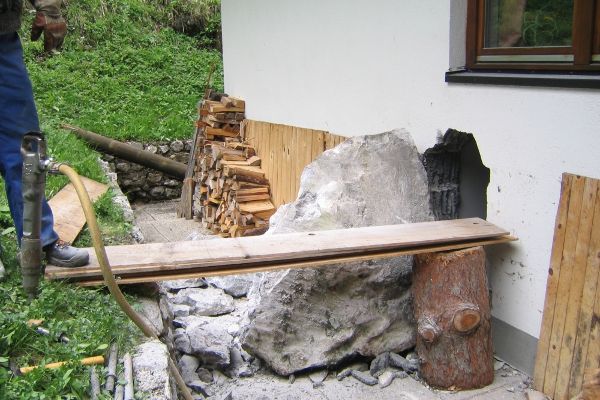Rockfall and slides

Rockfall can be due to weathering processes, frost wedging, movement of tree roots, or the triggering of a "rock avalanche" by humans and animals. Slides are in most cases triggered by heavy and/or long-lasting precipitation.
Slides
Slope movements comprise slow creeping and sliding movements (creeping of loose rock, sagging and sliding deep-seated mass movement, debris flow etc.) as well as fast slides and slope-type mudflows.
The most frequent, immediately damaging slope movements are deep-seated rotational slides or shallow translational slides. In Austria, high-risk slide areas are the flysch zone (Vienna Forests, Alpine foothills, Bregenz Wood), the hilly lands composed of late-tertiary marls (Alpenvorland, Weinviertel, Styrian basin) and the inner-alpine slate areas (greywacke zone, Central Alps) with clayey and marly or changing solid rock and fine-grained loose material (glacial moraines).
Slope movements are often linked to springs and near-surface groundwater. Drainage of the landslide body is therefore one of the most efficient techniques of slide stabilisation. In addition, technical protection structures like anchors, pile-slope systems or supporting structures are used to give slopes the required stability.
Rockfall
Rockfall is the fall of individual lumps of rock which were detached from rocky escarpments and cliffs by weathering or mechanical influences (cleft frost, tree roots).
Rockfall often causes severe damage in buildings and endangers long sections of the transport routes in the Alps. The fall of greater rock masses is called rockslide.
The protection against rockfall is predominantly provided by means of steel nets which catch stones in the process of falling. Catching dams are built to ensure the safe deposit of rockslides.
The term “erosion”
“Erosion” is a collective term for many abrasive processes related to the eroding effect of water, snow, wind, and gravity.
The Torrent and Avalanche Control Service provides risk analyses and scientific documentation concerning the natural hazards, erosion, slides and mudflow, but also carries out risk assessments to decide about disaster precautions.
In addition to the measures against the eroding force of torrents, the protection against extensive soil erosion and slides represents a permanently increasing field of work for the torrent and avalanche control sector.